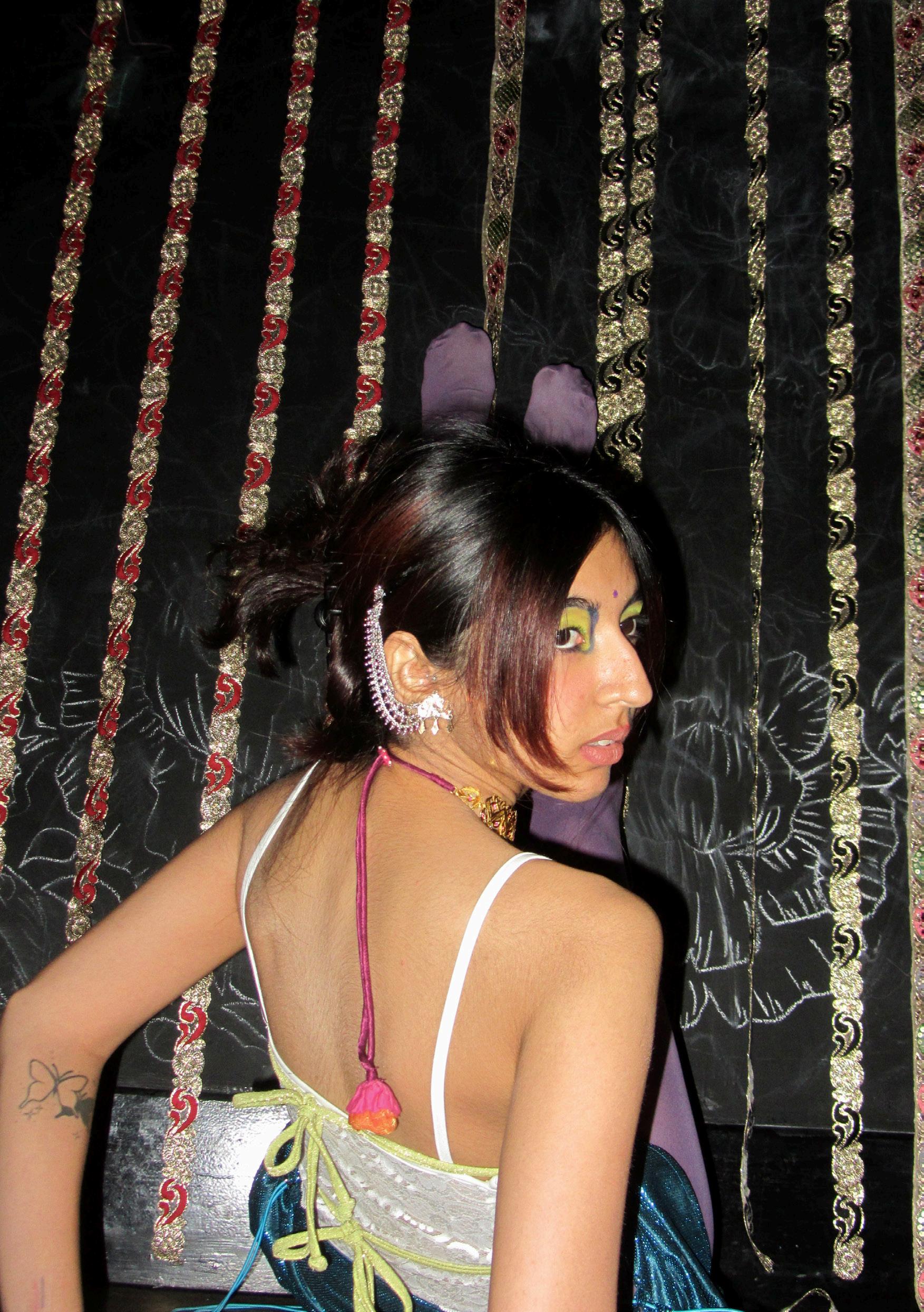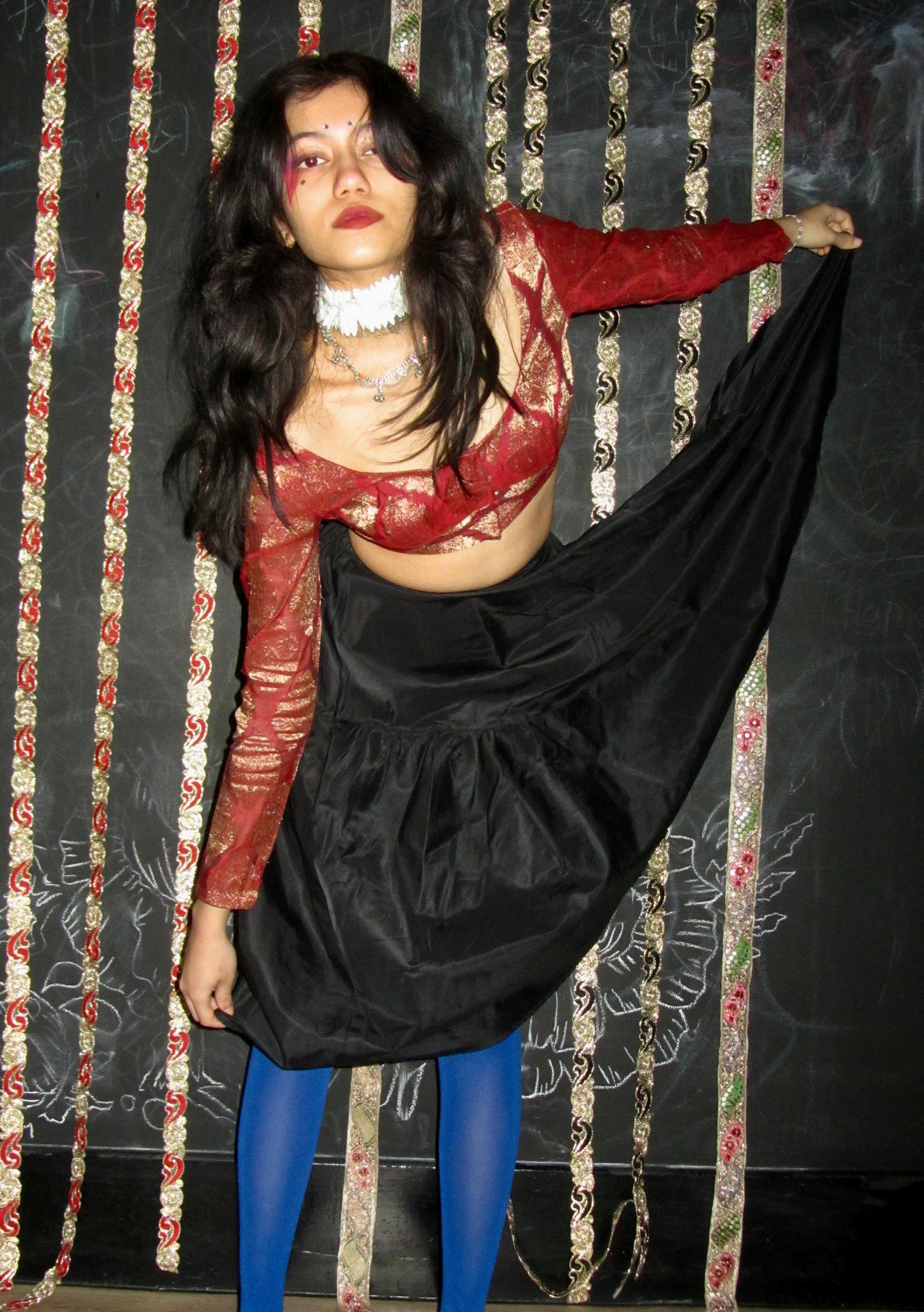I had to google “brown girl in purple tights.”

an overall fatigue and beauty revolution.


In an attempt to take part in the massive trend surge of coloured tights, I found myself having to google how the trend would look on me, as all the advertised models were tall, lean, and unmistakably western.
Beauty has its own logic. It brings us pleasure when we look at it, or even consider it deeply. It blinds us, making it hard to escape its allure. Or it is ephemeral or seemingly frivolous. And if it does not seduce us, it eludes and disappoints, over and over, because it is seemingly unattainable. In a society where beauty is a commodity, South Asians have often struggled with releasing women of what is expected of their appearances, and fnding themselves in the beauty that is glorifed on printed pages.

Inclusivity in the fashion industry has been on a steady upward incline and fashion campaigns appear to be moving away from the skinny, cisgendered white woman prototype to encompass more “diverse” choices. Black and brown models aren’t a rarity anymore. In trying to fnd myself in this space, and fnding a lack instead, I couldn’t help but notice; why aren’t we seeing more South Asian women as we scroll through Instagram, scour catwalks or fick through the pages of magazines? And is the inclusion of a diversity hire really our end goal?
It’s important to recognise that South Asians have a need for representation, but not representation as a part of a western narrative to add proft to an industry. Our stories and beauty, shown and directed through an authentic lens, not swayed by stereotypes. People must see more of South Asia through the eyes of someone with lived experience within the culture. This part of the continent has had so many ships crashing into it for the sake of colonialism, that its population today boasts a varied and striking array of physical characteristics —from coarse waves to sleek tresses and high, chiselled cheek bones to rounder features. Why is this broad spectrum of beauty so untapped by the fashion world?
Representation matters. It matters that diferent cultures, bodies of diferent shapes and sizes, with unique skin and hair textures, are gaining visibility and getting platformed to expand and destabilise what ‘beautiful’ has come to mean today. Whilst South Asian fashion is a website or magazine away, it is comforting to see people like you in your perimeter. It matters which bodies and people get represented as beautiful and fashionable, because what we see impacts what we can imagine, and it hurts not being imaginable.
Making beauty the object of examination, Vanita Reddy shifts our view away from looking at beauty directly. Instead of asking what beauty is, her new book, Fashioning Diaspora: Beauty, Femininity and South Asian American Culture, asks what beauty does. The strength of her approach removes beauty from the abstract realm, instead positioning it as an agent, an activator. Reddy pulls from an archive of cultural and aesthetic references in order to demonstrate specifcally how beauty is a mobilising and socialising force for specifcally South Asian American women. Even though Reddy specifes the experiences of these women in America, I felt every word she had penned down. She walks us through how Indian ideals and standards function as tools for South Asian women to realise, negotiate, resist or adapt their cultural identities and senses of belonging.
There is so little representation for us in the diaspora besides Bollywood and even that is really centred more around Western beauty ideals. I think there’s an innate desire to see ourselves outside of a colonial gaze and what better way to build community around that than to provide education and access and resources? South Asian designers, such as Natasha Sumant and Abarna Kugathasan are at the forefront of this movement. Their modern takes on traditional salwars, saris and kurtas are stunning and beftting for any occasion. The focal point for many of these designers is Desi fabric and design. However, the cuts and embroidery on each garment make them applicable for South Asians and fashion lovers alike. Additionally, queer creatives like Amesh Wijesekara and Rahemur Rahman are also changing the landscape for Desi communities. Focusing on inclusive fashion for all identities, their amazing pieces are reimagining how South Asians are perceived. Therefore, it’s not just fashion which these South Asians are renovating, it’s the landscape as a whole.




Abarna Kugathasan, a Tamil designer creating radical and kitschy couture mentioned in an interview with Vogue, “[I am] heavily infuenced by my family history and as a result of being raised in two diferent cultures, I wanted to tell a story around culture and identity in my work. In order to create my artifcial paradise and the designs of the garments, I seek inspiration in childhood memories and all the feelings attached to them. I returned to my roots and cultural identity, allowing myself to express my story and give an intimate look into my upbringing. Translating the intimacy of my work through the use of lingerie, and seamlessly combining it with the art of saree draping led to the technique of lingerie drapery.”
As a young South Asian woman myself, it was easy for me to underestimate myself and the impact of my work. Taking myself and my intentions seriously was the frst step towards feeling like I “belonged” in any creative space. Having photographed brown people my whole life I know where the light hits perfect so why not take full advantage of it? Conversations with my friends around identity, belonging, discrimination and representation feel like therapy, in the moment, but also always leave me with a lingering sadness. How can people comment on the South Asian fashion industry when they’ve barely touched the surface of what our part of the continent has to ofer?
